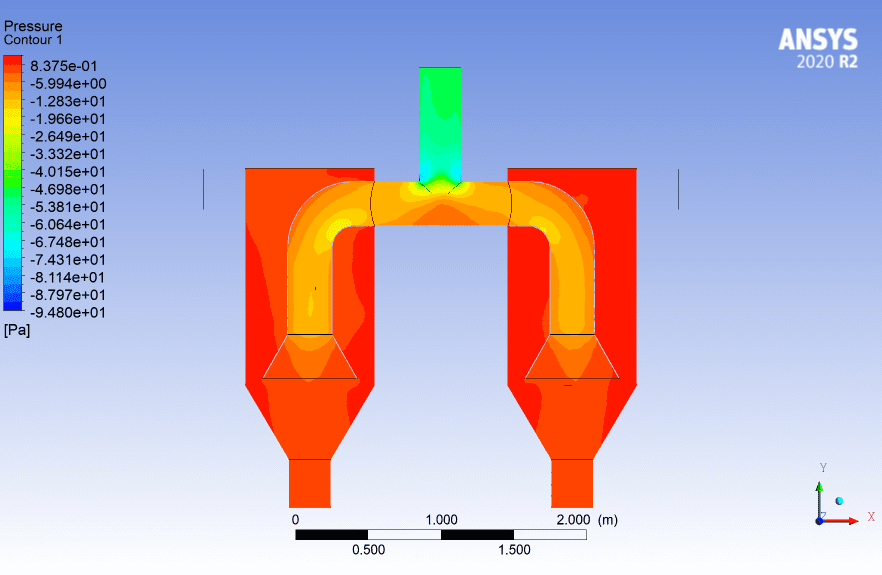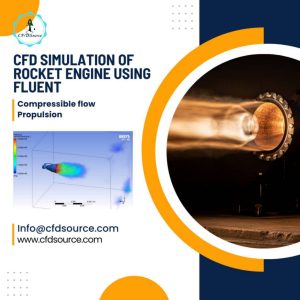Introduction
Computational Fluid Dynamics (CFD) is a cutting-edge field that plays a pivotal role in solving complex fluid flow problems. It is a multidisciplinary domain that combines engineering, mathematics, and computer science to simulate and analyze fluid behavior. CFD simulations have become increasingly vital in various industries, including aerospace, automotive, renewable energy, and environmental engineering. This article delves into the exciting realm of CFD project ideas, providing a diverse range of innovative and impactful projects.
1. Simulating Supersonic Flows for Aerospace Applications
In this project, we explore the world of supersonic flows encountered in aerospace engineering. We can simulate the behavior of airflow around supersonic aircraft, considering factors such as shock waves, boundary layers, and heat transfer. Such simulations can lead to more efficient and safer aircraft designs.
2. Design Optimization of Wind Turbine Blades
CFD simulations can aid in optimizing the design of wind turbine blades for enhanced energy conversion. By studying the flow characteristics and pressure distribution, engineers can create more efficient and durable wind turbines, contributing to sustainable energy solutions.
3. Analysis of Blood Flow in Cardiovascular Models
Understanding blood flow patterns in the human cardiovascular system is crucial for medical research. CFD can be employed to simulate blood flow through arteries and study the impact of arterial blockages, leading to better insights into cardiovascular diseases and treatment options.
4. Thermal Analysis of Electronics Cooling Systems
In the electronics industry, efficient cooling systems are vital to prevent device overheating. CFD simulations can help analyze the thermal behavior of electronic components and optimize cooling solutions, improving the reliability and performance of electronic devices.
5. Environmental Impact Assessment of Air Pollution
By employing CFD simulations, researchers can analyze the dispersion of pollutants in the atmosphere and assess their environmental impact. This can aid in formulating effective air quality management strategies and mitigating the adverse effects of pollution.
6. Study of Wave Hydrodynamics for Offshore Structures
CFD can be utilized to investigate wave hydrodynamics around offshore structures like oil rigs and wind turbines. Understanding wave interactions can lead to safer and more robust designs of these structures, particularly in harsh marine environments.
7. Aeroacoustic Analysis of Aircraft Noise
Aircraft noise is a significant concern for both passengers and the environment. CFD simulations can help analyze and minimize aerodynamic noise generated during flight, contributing to quieter and more comfortable air travel.
8. Optimization of Race Car Aerodynamics
In the automotive industry, optimizing aerodynamics is crucial for enhancing race car performance. CFD simulations enable engineers to refine car designs, reduce drag, and increase downforce, leading to improved lap times on the track.
9. Modeling Sediment Transport in Rivers
For environmental engineers, understanding sediment transport in rivers is essential for studying erosion and sedimentation processes. CFD can assist in predicting sediment movement and designing effective river management strategies.
10. Prediction of Indoor Air Quality in Buildings
With CFD simulations, architects and engineers can predict indoor air quality in buildings and optimize ventilation systems. This ensures healthier and more comfortable living and working environments for occupants.
11. Analysis of Flame Propagation in Combustion Chambers
In combustion engineering, CFD plays a vital role in studying flame propagation and optimizing combustion processes. This is crucial for enhancing the efficiency and reducing the emissions of combustion engines.
12. Simulation of Tsunami Wave Propagation
Studying tsunami wave propagation is essential for coastal areas prone to tsunamis. CFD simulations can aid in predicting the impact of tsunamis and devising early warning systems to minimize casualties and damage.
13. Optimization of Chemical Reactors
Chemical engineers can use CFD simulations to optimize the design and operation of chemical reactors. This enables the production of chemicals with increased efficiency and reduced environmental impact.
14. Predicting Weather Patterns and Storms
CFD techniques can complement traditional meteorological methods in predicting weather patterns and storm movements. Accurate weather forecasts are crucial for disaster preparedness and response.
15. Hydrodynamic Analysis of Submarines and Underwater Vehicles
For marine engineers, simulating the hydrodynamics of submarines and underwater vehicles is essential for their performance and maneuverability. CFD simulations help in designing submarines with improved stealth and agility.
16. Optimization of Cooling Systems in Data Centers
With the increasing demand for data storage and processing, efficient cooling systems are essential for data centers. CFD simulations can aid in optimizing airflow and cooling distribution, leading to energy savings and improved equipment performance.
17. Analysis of Blood Flow in Artificial Organs
For biomedical engineers, studying blood flow in artificial organs like heart pumps or dialysis machines is critical for device design and patient safety. CFD simulations can provide valuable insights into flow patterns and potential complications.
18. Evaluation of Hydroelectric Power Plant Efficiency
CFD can be utilized to analyze the efficiency of hydroelectric power plants by simulating water flow through turbines. Optimizing turbine designs can enhance power generation and reduce environmental impact.
19. Simulating Smoke Spread in Fire Safety Assessments
In fire safety engineering, understanding smoke spread in buildings is crucial for effective evacuation strategies. CFD simulations can aid in predicting smoke movement and identifying safe evacuation routes.
20. Design of Efficient HVAC Systems for Buildings
Heating, ventilation, and air conditioning (HVAC) systems play a crucial role in building comfort. CFD simulations can help in designing HVAC systems that maintain optimal indoor conditions while minimizing energy consumption.
21. Analysis of Blood Flow in Tumors for Cancer Research
Studying blood flow patterns in tumors is vital for cancer researchers. CFD simulations can assist in understanding tumor growth and designing targeted drug delivery strategies.
22. Simulation of Oil Spill Transport in Oceans
In the event of an oil spill, understanding the spread of oil in the ocean is crucial for mitigating environmental damage. CFD simulations can aid in predicting oil movement and devising effective cleanup strategies.
23. Aeroelastic Analysis of Aircraft Wings
Aeroelasticity refers to the interaction between aerodynamic forces and structural dynamics. CFD simulations can help analyze wing behavior under various flight conditions, ensuring safe and stable aircraft designs.
24. Study of Airflow in Indoor Sports Arenas
Creating comfortable airflow conditions in indoor sports arenas is essential for athletes and spectators. CFD simulations can optimize ventilation systems to maintain proper temperature and air quality.
25. Prediction of Ocean Currents and Marine Ecosystems
CFD simulations can be applied to study ocean currents and their impact on marine ecosystems. This aids in marine conservation and understanding climate change effects on marine life.
26. Analysis of Wind Effects on Tall Buildings
Tall buildings are susceptible to wind-induced vibrations. CFD simulations can evaluate the aerodynamic behavior of skyscrapers and optimize their designs for structural stability.
27. Simulation of Blood Flow in the Brain for Stroke Research
Understanding blood flow in the brain is crucial for stroke research. CFD simulations can provide insights into blood circulation and potential treatment options.
28. Design of Efficient Propulsion Systems for Ships
For naval architects, optimizing ship propulsion systems is essential for fuel efficiency and reduced emissions. CFD simulations can aid in designing efficient propulsion systems for various vessel types.
29. Analysis of Airflow in Agricultural Greenhouses
In agricultural settings, controlling airflow is vital for crop growth and pest management. CFD simulations can optimize greenhouse designs to create the ideal environment for plants.
30. Simulation of Smoke Extraction in Underground Tunnels
In the event of a fire in an underground tunnel, smoke extraction is critical for safe evacuation. CFD simulations can assist in designing effective smoke extraction systems for tunnel safety.
Conclusion
Computational Fluid Dynamics has revolutionized the way we approach complex fluid flow problems across diverse industries. The above CFD project ideas showcase the limitless possibilities and real-world applications of this field. As technology continues to advance, CFD simulations will play an increasingly integral role in shaping a more efficient, sustainable, and innovative future.



